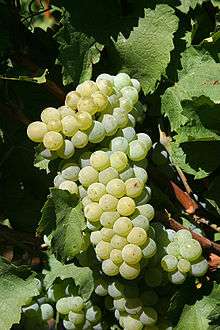
Braveheart
Braveheart is a 1995 historical drama epic film directed by and starring Mel Gibson. Gibson portrays William Wallace, a 13th-century Scottish warrior who led the Scots in the First War of Scottish Independence against King Edward I of England. The story is based on Blind Harry's epic poem The Actes and Deidis of the Illustre and Vallyeant Campioun Schir William Wallace and was adapted for the screen by Randall Wallace.
The film was nominated for ten Academy Awards at the 68th Academy Awards and won five: Best Picture, Best Makeup, Best Cinematography, Best Sound Editing, and Best Director.
Plot
In 1280, King Edward "Longshanks" (Patrick McGoohan) invades and conquers Scotland following the death of Alexander III of Scotland, who left no heir to the throne. Young William Wallace (James Robinson) witnesses Longshanks' treachery, survives the deaths of his father (Sean Lawlor) and brother (Sandy Nelson), and is taken abroad on a pilgrimage throughout Europe by his paternal Uncle Argyle (Brian Cox), where he is educated. Years later, Longshanks grants his noblemen land and privileges in Scotland, including Prima Nocte (or droit du seigneur, the right of the lord to have sex with female subjects on their wedding nights). Meanwhile, Wallace (Mel Gibson) returns to Scotland and is reunited with his childhood friend, Hamish Campbell (Brendan Gleeson). Wallace falls in love with his other childhood friend, Murron MacClannough (Catherine McCormack); they marry in secret so she will not have to spend the night with the local English lord. Wallace rescues Murron from being raped by English soldiers, but as she fights off their second attempt, Murron is captured and publicly executed by having her throat slit. In retribution, Wallace leads his clan to slaughter the English garrison in his hometown and send the occupying garrison at Lanark back to England.

Braveheart (1925 film)
Braveheart is a 1925 silent film western directed by Alan Hale, Sr. and starring Rod La Rocque. The story focuses on members of a tribe of Indians who are being intimidated by the owners of a canning company seeking to violate the treaty protecting the tribe's fishing grounds.
History
A project by Cecil B. DeMille, initially it is named "Strongheart" after a play written by his brother William C. deMille circa 1904 and produced on Broadway in 1905 as his first major success. A film had been developed in 1914 from it. However, as the success of the play continued, a remake of the film was undertaken. Nipo T. Strongheart, early in his work in Hollywood with Native American topics, was asked to rewrite the movie and he included elements referring to the Yakima Nation and had the hero succeed in preserving Indian fishing rights, a topic of some recent interest. The original movie was 30 min long. and the revised movie was 71 min. However as the project neared completion another "Strongheart" took to film – a canine star. Subsequently the DeMille film was retitled and released as Braveheart. Nipo T. Strongheart played a role in the film playing a Medicine Man and collaborating on the screenplay. A news story covering the work is echoed a couple places – New York, and California. Sometimes advertising for performance-lectures of Nipo Strongheart from then on would have him in Indian costume as well as a scene from the movie where he was dressed in normal attire.
Braveheart (disambiguation)
Braveheart is a 1995 film directed by and starring Mel Gibson.
Braveheart or Brave Heart may also refer to:
Film and TV
Music
Albums
Songs
Sports
Gros
Gros or Le Gros may refer to:
People

Gros (coinage)
A gros was a type of silver coinage of France from the time of Saint Louis. There were gros tournois and gros parisis. The gros was sub-divided in half gros and quarter gros. The original gros created by St Louis weighed about 4.52 g of nearly pure silver, and was valued at one sou, that is 12 deniers or 1/20 of a livre tournois. Unlike the gold écu that was minted in small numbers, mostly for prestige reasons, the gros was a very common coin, and very widely copied by non royal mints.
Notes

Elbling
Not to be confused with Elbing, a city in Poland.
Elbling is a variety of white grape (sp. Vitis vinifera) which today is primarily grown in the upstream parts of the Mosel region in Germany and in Luxembourg, where the river is called Moselle. The variety has a long history, and used to cover much of Germany's vineyards from medieval times and was that country's most cultivated variety until the early 20th century, but has been in decline ever since. As of 2006, there were 583 hectares (1,440 acres) of Elbling vineyards in Germany, which made it the country's 23rd most grown variety of grape. Of that vineyard surface, 575 ha or 98.6% was found in the Mosel region In the same year, there were 122.9 hectares (304 acres) of Elbling grown in Luxembourg.
History and origin
It has been speculated that Elbling was grown along Mosel already in Roman times, and that it could even be identical to the Vitis albuelis described by Lucius Columella in his De re rustica and the Vitis alba described by Pliny the Elder, although this has by no means been proven. Both Latin names mean "the white grape" and would then have been corrupted to Elbling at some later stage. DNA profiling has indicated that Elbling is an offspring of Gouais blanc (also known as Heunisch) and a cross between Traminer and some unidentified variety. This parentage is consistent with Elbling being an ancient grape variety, and incidentally, it is the same parentage as for Riesling. This parentage and history makes it likely that Elbling originated somewhere in the Rhine area.
Podcasts:

